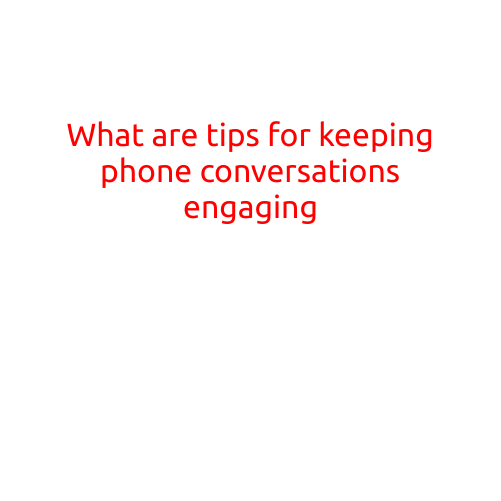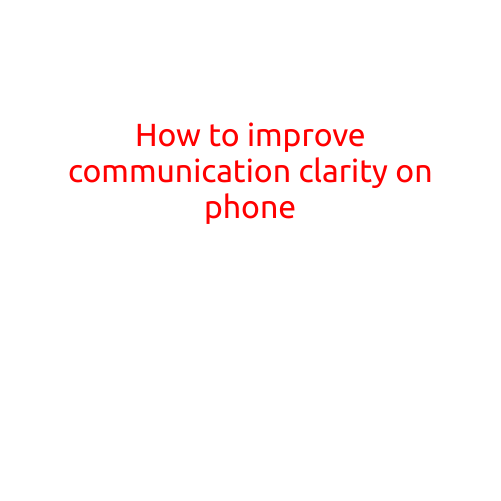
What are Tips for Keeping Phone Conversations Engaging?
In today’s digital age, phone conversations are a common way for people to connect and communicate with each other. Whether it’s for personal or professional reasons, effective phone conversations can make a significant difference in building relationships and achieving goals. However, it’s easy to get stuck in a rut and struggle to keep phone conversations engaging. Fear not! With these practical tips, you’ll be well on your way to having more engaging and productive phone conversations.
- Plan Ahead
Before you pick up the phone, take a few minutes to review your notes, background information, and objectives. This will help you stay focused and ensure you’re prepared to discuss the topic at hand. Having a clear understanding of the purpose and scope of the conversation will also help you stay on track and avoid getting sidetracked.
- Show Interest and Engagement
People are more likely to stay engaged in a conversation when they feel heard and understood. Make an effort to ask open-ended questions, actively listen to the other person’s responses, and show genuine interest in what they’re saying. Avoid interrupting and focus on building a rapport by showing empathy and understanding.
- Use Positive Body Language (Virtual)
Even though the other person can’t see you, using positive virtual body language can still make a difference. Stand up, smile, and make eye contact (even if you’re just looking at a screen). This will help you feel more confident and alert, which can translate through the phone line.
- Be Yourself
It’s tempting to put on a perfect persona on the phone, but it’s important to be authentic and genuine. People can usually tell when you’re not being yourself, and it can lead to awkwardness or mistrust. Be true to who you are, and let your personality shine through.
- Use Animated Voice and Tones
Your tone and inflection can greatly impact the tone and pace of the conversation. Use a lively and enthusiastic tone to keep the conversation engaging, and don’t be afraid to use humor or playful language to lighten the mood.
- Keep it Concise
Philosophy aside, people generally don’t have an infinite amount of time to devote to phone conversations. Keep your points concise, and avoid rambling on or getting stuck on tangents. This will help keep the conversation moving and prevent it from feeling tedious.
- Use Silence to Your Advantage
Don’t be afraid of silence! Sometimes, leaving a moment of silence can give the other person an opportunity to think and respond, which can lead to more thoughtful and meaningful conversations. Avoid filling every moment with noise or filler words, and let the silence speak for itself.
- Be Open-Minded
Phone conversations are a great opportunity to learn from others, whether it’s about a new idea, a different perspective, or a personal story. Keep an open mind and be willing to learn and absorb new information. This will show the other person that you value their thoughts and opinions, and it can lead to more engaging and informative conversations.
- Practice Active Listening
Active listening is essential for keeping phone conversations engaging. Give the other person your full attention, avoid distractions, and show that you’re listening by nodding (or mentally nodding) along. This will help the other person feel heard and understood, which can lead to more productive and meaningful conversations.
- Follow Up
After the conversation, take a few minutes to summarize the main points and key takeaways. Send a follow-up email or message to reiterate any agreements or action items, and to thank the other person for their time. This will help keep the conversation going and show that you’re committed to following through on any promises or commitments.
By incorporating these tips into your daily phone conversations, you’ll be well on your way to having more engaging, productive, and meaningful interactions. Remember to stay focused, be yourself, and keep an open mind – and don’t forget to put on your best virtual body language!





